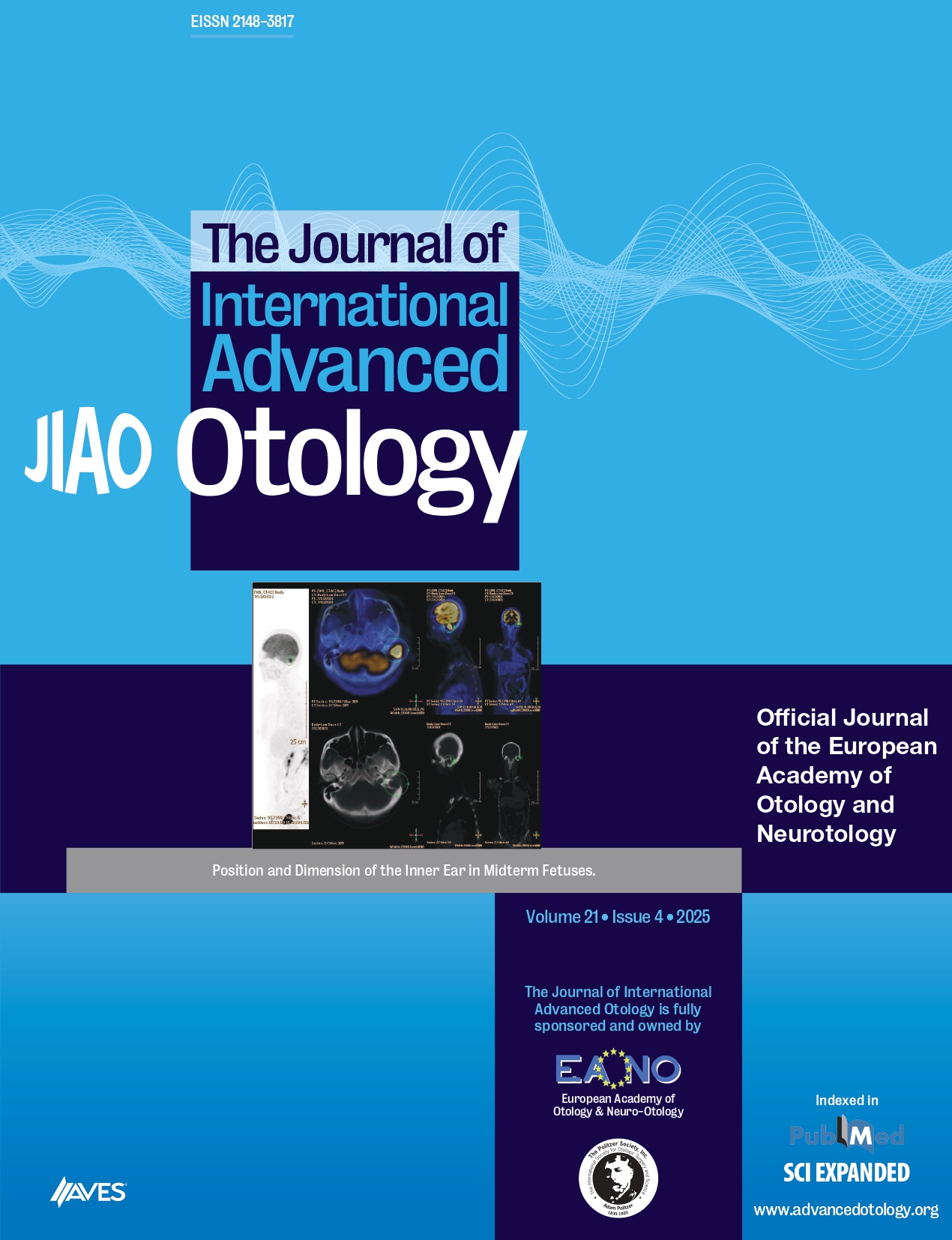Abstract
OBJECTIVE: Vestibular migraine (VM) is a clinical condition characterized by temporal overlap between vestibular symptoms and migraine. In this study, we aimed to determine the changes in vestibular myogenic potential (cVEMP) and auditory brainstem response (ABR) in patients with VM and migraine.
MATERIALS and METHODS: A total of 86 participants with no hearing loss or additional disease between the ages of 18 and 45 were enrolled in three different groups: group 1, VM; group 2, migraine without aura; and group 3, healthy controls. cVEMP and ABR were performed for all participants during attacks and attack-free periods. The differences between the right and left sides were calculated.
RESULTS: There was no significant difference in cVEMP p13-n23 latencies between any of the groups. There were statistically significant differences related to cVEMP p13-n23 amplitudes between groups 1, 2, and 3. This significant difference originated from group 1 when compared with the other groups (p<0.05). When we compared the cVEMP results of patients with VM during attack and attack-free periods, a statistically significant decrease was determined in the p13-n23 amplitude values during the attack period (p<0.01). Additionally, when we compared group 1 and group 3, the wave V peak latencies in ABR were significantly prolonged in group 1 (p<0.05).
CONCLUSION: cVEMP and ABR can be used as diagnostic criteria for patients with VM during attacks. Further studies with larger groups are needed to verify our findings.



.png)
.png)